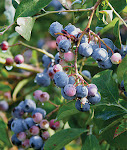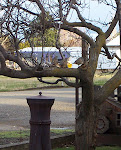Just 11 days after taking pictures of the first little pods beginning to form, we have peas ready to pick! The sweet potato vines are flourishing and the sunchokes are looking very healthy. I bought the sunchoke tubers (Jerusalem artichoke) at a local grocery store and sprouted them in pots. They are very invasive so were left in a pot to grow, time will tell on how well they did.
The sunchoke (Helianthus Tuberosus) is a native of North America and is related to the sunflower. They are known to have been cultivated by Native Americans before the arrival of European settlers. It is a high quality edible tuber with a nutty, somewhat sweet flavor, many cooks enjoy adding bits of the crunchy, raw vegetable to salads or salsas, while others prefer them roasted or mashed. That being said, I haven’t tried them and will let you know what I thought of them.
 |
| Little Marvel bush peas, ready for harvest |
 |
| Sunchokes |
















